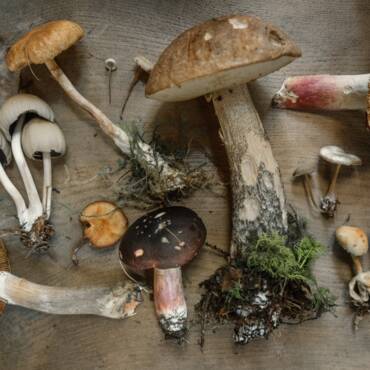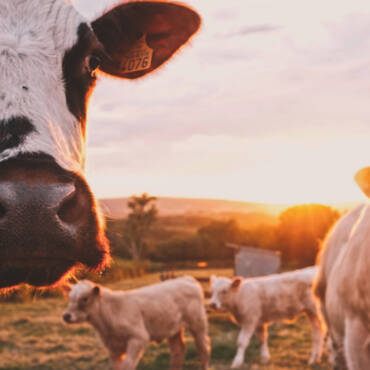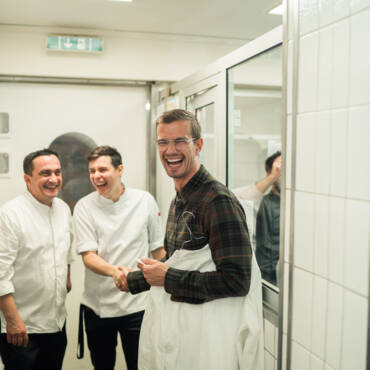
Wird das die beste Pilzsaison seit Jahren?
Hier kommen die wichtigsten Tipps für erfolgreiche Pilzsammler und alle, die es werden möchten.
Wenn ein britischer Journalist im Auftrag der Financial Times in den Schwarzwald reist, darf man auf seine Sicht der Dinge gespannt sein. Seine Beschreibungen sind bemerkenswert – deshalb lesen Sie sie hier im Original.
I came to the Black Forest in search of simple pleasures — to walk and to eat. And on a hillside overlooking the village of Baiersbronn, with a winding trail ahead of me and dinner around the corner, it seems I might have found them.
This south-western edge of Germany offers more than simple forest fare. At the three-star Restaurant Bareiss the tasting menu moves through partridge and tonka bean, foie gras and fragolino grapes, to a venison ragout refined, condensed, and fortified with the fungal punch of black chanterelles. The Bareiss is not the only fine-dining option: Baiersbronn and its eight neighbouring hamlets make up a municipality with a population of 14,000 but a remarkable eight Michelin stars. The Bareiss’ friendly rival, the three-star Schwarzwaldstube, was the first establishment in Germany to make it in to the guide. Both are set among some of the finest hiking in Germany, with 550km of paths criss-crossing the wooded hills, and, for the foodie visitor, a network of “culinary hiking trails” complete with local experts to introduce the forest’s wild bounty.
One of those guides is Anja Rothfuss. “People walk along here every day and don’t realise they’re passing edible plants,” she tells me as we set off for a hike on a chilly, damp morning. Anja is one of the region’s Wildpflanzenwirte (wild plant hosts), and an enthusiastic advocate of local produce. Even on this unpromising autumn day, she finds citrus-giving wild sorrel along the forest edges, as well as parsley relative spignel, and tormentil, whose root can be infused into schnapps.
Before the tourists arrived, such plants were a vital part of local people’s diet, Anja explains. “In spring people would pick the fresh spruce needles and mix them with cream — they’re full of vitamin C,” she says. The Black Forest is now mostly planted with evergreen spruces, as the native hardwood trees had largely been felled for timber by the mid-19th century. Many of the felled trunks were floated north along the Rhine and used by Dutch shipwrights or as wooden foundations in the soggy, unstable ground beneath Amsterdam.
As the drizzle gathers itself into rain we tighten the hoods of our jackets and begin the steep climb up to the Ellbachseeblick viewing platform. The structure is built from planks of local Douglas fir and is one of the forest’s most popular vantage points, with spectacular views — weather permitting. We’re in luck: as we approach the platform the low cloud begins to break and the full panorama is revealed; the Ellbach lake and the Swabian hills cloaked in a patchwork of autumn yellows and dark green spruce.
My mind is already on my evening meal at the Restaurant Bareiss — and the need to conserve stomach space — but Anja insists I first try some rustic fare. Out of her knapsack come local lamb sausage, homemade elderflower drink, and a pat of butter to mix with the herbs we’ve gathered. Simple, delicious, and on a raw autumn afternoon, too good not to devour.
In the Black Forest, it seems, you can’t move far without eating. The Bareiss is part of hotel of the same name, where even the spa has sorbets and muesli on hand in case you get peckish between breakfast and lunch. In mid-afternoon the hotel’s dining room tables groan beneath an insulin-troubling display of cakes to see you through those fallow hours before dinner. And the same goes for the hiking. The next day the sky has been scrubbed clear of clouds and I set off alone for a walk along one of the forest’s “culinary trails” (Geniesserpfade), where food is never far away, and no hiker goes hungry. My goal is the Sattelei Hut, a forest cabin also owned by the Hotel Bareiss that could have been sketched by the Brothers Grimm.
Myths are on my mind as I pass a farm that once belonged to a local family of natural healers, the Morloks. Their reputed powers ranged from locating lost cattle to curing terminal diseases; the mystery only deepened when builders doing recent renovations unearthed an 18th-century tome full of notes and recipes in German, Hebrew and Latin, and a collection of labelled tinctures.
I’m soon to require magical intervention myself. The path climbs out of the Mitteltal hamlet and burrows into a tunnel of spruce trees. I am alone, with only the thrumming of distant woodpeckers for company. It’s a straightforward walk to the hut — most of the hiking in the Black Forest is invigorating rather than gruelling; these are hills, not alps. But in the woods it’s easy to lose your bearings. One turning is starting to look much like the last, I haven’t seen a fingerpost for a while and there’s no trail of breadcrumbs. As I’m about to attempt a Morlokian charm for lost hikers, the trees part and there is the Sattelei Hut with its shingle roof and cockerel weathervane. Autumn sun floods the terrace and the waistcoated waiter is ferrying out fistfuls of beer tankards. It’s time for lunch.
After two days of hiking, the dining takes centre stage. Baiersbronn is above all famed for its top-flight restaurants, which form a cluster of Michelin stars to rival Bray in Berkshire or Courchevel in the French Alps. In Baiersbronn it was Harald Wohlfahrt at the Schwarzwaldstube (owned by the Hotel Traube Tonbach) who paved the way and, helped by a healthy rivalry between his hotel and the Bareiss, the stars piled up.
Proximity to well-heeled parts of Germany and France (the town is just over an hour from Strasbourg, less than two from Stuttgart) was key to this culinary development, according to the Schwarzwaldstube’s new head chef, Torsten Michel. Indeed France is more than just a source of customers. “We are a French restaurant,” the Dresden-born chef insists, before happily straying even further from the German tourist board’s messaging. “German cooking is not so bad,” he muses, “a lot of young chefs want to go the German way, but how can I put this: I am a European guy, not only a German guy. We are European, so we can use all kinds of cuisines.”

And so to the bright dining room of the Black Forest’s most Francophile — and famous — restaurant. I am joined for lunch by my brother Eric, a professor of plant biology. He may have missed the wild-herb hike, but it doesn’t take him long to start identifying things. “Ah, Rumex acetosa,” he says, picking aside matchsticks of fresh cucumber to reveal delicate quenelles of sorrel ice cream, the same plant Anja foraged in the woods. The ice cream is smooth, silky and fresh — it’s a sublime start.
Next is the simple opulence of Gillardeau oysters and caviar. “With this,” the French sommelier Stéphane Gass informs us with a shrug, “it has to be champagne” (Domaine de Muzy, Blanc de Blancs). Then it’s back to the Black Forest for local mushrooms gathered by Frau Kohlmetz, a stooped lady who in autumn arrives every Saturday with the best fungi from within 50km. Today is a good day: there are chanterelles, oyster mushrooms and the creamy fronds of Krause Glucke, or wood cauliflower; each fungus is cooked individually to preserve its character and served with an egg yolk and truffle.
“If you ate hare at the table with your grandmother,” head chef Torsten told me before the meal, “then you know the taste, the feeling of eating it. I can say we are passing these flavours on to the next generation.” Torsten’s take on hare — first rolled, then served with black truffle and duck liver, and coated in a sauce thickened with the animal’s blood — is the taste of hare I want to remember.
After five hours of the tasting menu we emerge into hazy afternoon light. We pull on our hiking shoes and set off for a final Black Forest amble. The trail follows the Tonbach river; the water tumbles over red sandstone rocks; the sky is a dull pewter. We pass the remains of 17th-century charcoal workings and, fuelled by our feast, keep walking until the bats are darting overhead and the trees are sinking into the gloaming.
The distant lights of the Tonbach hamlet guide us back along the same path used by the charcoal burners. Our last meal in Baiersbronn will, fittingly, be in the tiny room where its journey to culinary mecca began. The Bauernstube, the Traube Tonbach’s original restaurant, was opened 230 years ago by the enterprising Tobias Finkbeiner as an inn for hungry woodland labourers. Hiking and dining — it’s a combination with history here.

Hier kommen die wichtigsten Tipps für erfolgreiche Pilzsammler und alle, die es werden möchten.

Regionale Lebensmittel direkt vom Bauernhof auf den Frühstückstisch. Drei Geheimtipps für den Einkauf ab Hof.

TV-Star Joko Winterscheidt durfte einen Tag lang bei Torsten Michel in der Drei-Sterne-Küche der Schwarzwaldstube assistieren.